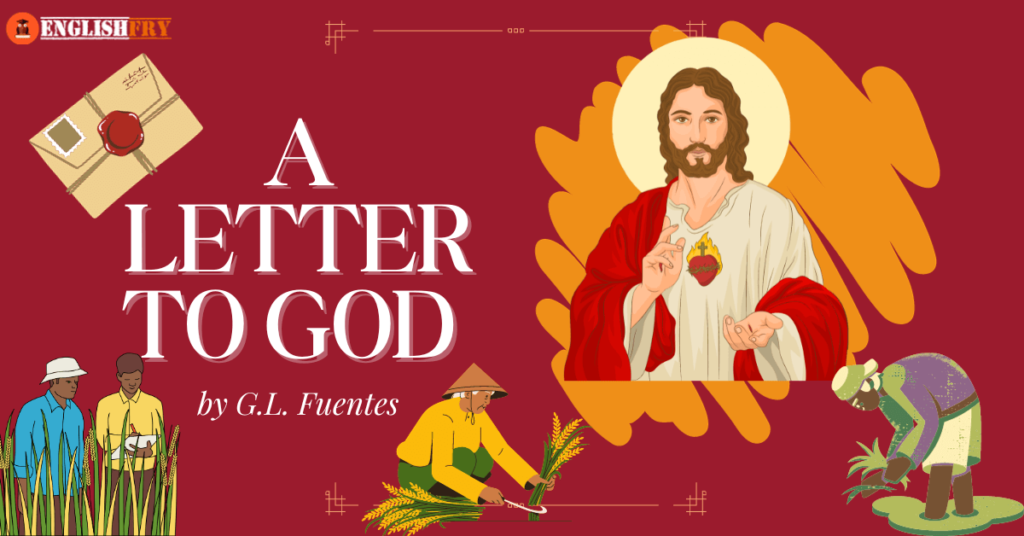Table of Contents
ToggleAbout the poet Robert Frost
Chapter 1 of the Class 10 English Book, ‘First Flight’, incorporates poems. The first poem is Dust of Snow and is written by way of Robert Frost. Here, i’ve supplied Class 10 English Dust of Snow summary of the poem within the form of CBSE notes. By going through the summary of the poem, college students may be capable of apprehend the poet’s point of view and the message that he desires to bring through the poem Dust and Snow. Students can also talk to CBSE Class 10 English Poem Notes Dust of Snow for their revision during the exam.
A highly acclaimed American poet of the twentieth century.Robert Frost wrote about characters, people and landscapes.His poems are concerned with human tragedies and fears, his reaction to the complexities of life and his ultimate acceptance of his burdens.Stopping by the Woods on a Snowy Evening, Birches, Mending walls are a few of his well-known poems.In the poem A Roadside Stand, Frost presents the lives of poor & deprived rural people with the deepest sympathy and humanity.
| Subject | English Language & Literature |
| Class | 10 |
| Board | CBSE |
| Chapter Name | Dust of Snow |
| Poet | Robert Frost |
| Type | Important Questions and Answers |
| Session | 2023-24 |
| Book Name | First Flight Chapter 1 |
| Literature | Poem |
Dust of Snow explanation stanza wise
Lorem ipsum dolor sit amet, consectetur adipiscing elit. Ut elit tellus, luctus nec ullamcorper mattis, pulvinar dapibus leo.
Stanza-1
The way a crow
Shook down on me
The dust of snow
From a hemlock tree
Explanation: The poet, Robert Frost, recounts a small incident that changes his mood. It seems very simple but it has a great significance. The poet was, once, very depressed and hopeless. He was in a state of sorrow and was lost in his thoughts. He was standing under the hemlock free. Suddenly a crow, that was sitting on the tree, shook the tree and the fine particles of snow from the tree fell on the poet.
Stanza-2
Has given my heart
A change of mood
And saved some part
Of a day I had rued.
Explanation: When the soft and cold snow fell on the poet, it changed his mood from the state of sadness to happiness. He started feeling soothed (peaceful and refreshed. This simple incident helped him enjoy the remaining part of the day. He, thus, became happy as it saved his rest of the day from being wasted and held in regret.
Conclusion of Dust of Snow
The poem teaches us a lesson that every small act in life can illuminate our soul and motivate us to do better.
Dust of snow summary in Hindi

कवि, रॉबर्ट फ्रॉस्ट, एक छोटी सी घटना का वर्णन करते हैं जिससे उनका मूड बदल जाता है। यह देखने में तो बहुत सरल लगता है लेकिन इसका महत्व बहुत बड़ा है। एक समय कवि बहुत उदास और निराश था। वह दुःख की स्थिति में था और अपने विचारों में खोया हुआ था। वह हेमलॉक के नीचे आज़ाद खड़ा था।
अचानक पेड़ पर बैठे एक कौवे ने पेड़ को हिलाया और पेड़ से बर्फ के बारीक कण कवि के ऊपर गिरे। जब कवि के ऊपर नर्म और ठंडी बर्फ गिरी तो उसका मूड उदासी से खुशी में बदल गया। वह शांत (शांतिपूर्ण और तरोताजा) महसूस करने लगा।
इस साधारण घटना ने उसे दिन के शेष भाग का आनंद लेने में मदद की। इस प्रकार, वह खुश हो गया क्योंकि इससे उसका शेष दिन बर्बाद होने और पछतावे में रहने से बच गया। कविता हमें एक सबक सिखाती है कि जीवन का हर छोटा कार्य हमारी आत्मा को रोशन कर सकता है और हमें बेहतर करने के लिए प्रेरित कर सकता है।
Dust of snow summary in Assamese

কবি ৰবাৰ্ট ফ্ৰষ্টে তেওঁৰ মেজাজ সলনি কৰা এটা সৰু ঘটনাৰ কথা কৈছে। অতি সহজ যেন লাগিলেও ইয়াৰ এক বৃহৎ তাৎপৰ্য আছে। কবিজন, এবাৰ, অতি হতাশ আৰু আশাহীন হৈ পৰিছিল। দুখৰ অৱস্থাত তেওঁৰ চিন্তাত হেৰাই গৈছিল। হেমলক ফ্ৰী তলত থিয় হৈ আছিল সি।
হঠাতে গছজোপাৰ ওপৰত বহি থকা কাউৰী এটাই গছজোপা জোকাৰি গ’ল আৰু গছজোপাৰ পৰা ওলোৱা নিয়ৰৰ মিহি কণাবোৰ কবিৰ ওপৰত পৰিল।কোমল আৰু ঠাণ্ডা নিয়ৰ কবিৰ ওপৰত পৰিলেই তেওঁৰ মেজাজটো দুখৰ অৱস্থাৰ পৰা সুখলৈ সলনি হৈ গ’ল। তেওঁ শান্তি অনুভৱ কৰিবলৈ ধৰিলে (শান্তি আৰু সতেজ।
এই সহজ কাণ্ডই তেওঁক দিনটোৰ বাকী অংশ উপভোগ কৰাত সহায় কৰিলে। তেওঁ, এইদৰে, সুখী হৈ পৰিল কাৰণ ই তেওঁৰ দিনটোৰ বাকী সময়খিনি অপচয় আৰু অনুশোচনাত ৰখাৰ পৰা ৰক্ষা কৰিলে।কবিতাটোৱে আমাক এটা পাঠ শিকাইছে যে জীৱনৰ প্ৰতিটো সৰু সৰু কাৰ্য্যই আমাৰ আত্মাক আলোকিত কৰিব পাৰে আৰু আমাক ভাল কাম কৰিবলৈ প্ৰেৰণা দিব পাৰে।
Dust of Snow mcq with answer

- What is the poet’s reaction to the crow shaking down the dust of snow on him?
- a) Happiness
- b) Sadness
- c) Indifference
- d) Surprise
Correct Answer: a) Happiness
- What does the poet say the dust of snow saved him from?
- a) Loneliness
- b) A bad day
- c) Sorrow
- d) Fear
Correct Answer: b) A bad day
- According to the poem, what tree did the crow shake the dust of snow from?
- a) Pine tree
- b) Oak tree
- c) Hemlock tree
- d) Maple tree
Correct Answer: c) Hemlock tree
- How did the dust of snow affect the poet’s heart?
- a) Made it heavy
- b) Gave it a change of mood
- c) Filled it with sorrow
- d) Made it skip a beat
Correct Answer: b) Gave it a change of mood
- What is the poet grateful for in the poem?
- a) The crow’s presence
- b) The snowfall
- c) The change of mood
- d) The hemlock tree
Correct Answer: c) The change of mood
- What emotion does the poet associate with the day he had rued?
- a) Happiness
- b) Regret
- c) Excitement
- d) Gratitude
Correct Answer: b) Regret
- Which tree is mentioned in the poem as the source of the dust of snow?
- a) Pine tree
- b) Oak tree
- c) Hemlock tree
- d) Willow tree
Correct Answer: c) Hemlock tree
- What effect did the dust of snow have on the poet’s day?
- a) Ruined it further
- b) Improved it
- c) No effect
- d) Made it boring
Correct Answer: b) Improved it
- What does the poet mean by “saved some part of a day I had rued”?
- a) The day was completely saved
- b) A portion of the day was salvaged
- c) The day was ruined
- d) No part of the day was saved
Correct Answer: b) A portion of the day was salvaged
- In the poem, what is the significance of the crow shaking down the dust of snow?
- a) It brings bad luck
- b) It symbolizes a change in mood
- c) It signals the start of winter
- d) It has no significance
Correct Answer: b) It symbolizes a change in mood
- What is the poet’s initial mood before the crow shakes down the dust of snow
- a) Joyful
- b) Melancholic
- c) Angry
- d) Anxious
Correct Answer: b) Melancholic
- According to the poem, what does the crow physically do to the poet?
- a) Sings a song
- b) Shakes down snow
- c) Pecks at him
- d) Flies away
Correct Answer: b) Shakes down snow
- How does the poet describe the snow in the poem?
- a) Soft and fluffy
- b) Hard and icy
- c) Wet and slushy
- d) Dust-like
Correct Answer: d) Dust-like
- What does the poet mean by “a change of mood” in the context of the poem?
- a) A sudden burst of anger
- b) A shift in emotional state
- c) A feeling of confusion
- d) A sense of nostalgia
Correct Answer: b) A shift in emotional state
- What is the symbolic significance of the hemlock tree in the poem?
- a) Danger
- b) Death
- c) Healing
- d) Joy
Correct Answer: c) Healing
- What does the poet imply about the value of small, unexpected moments in life?
- a) They are insignificant
- b) They can have a profound impact
- c) They are always negative
- d) They go unnoticed
Correct Answer: b) They can have a profound impact
- What emotion is expressed in the line “And saved some part of a day I had rued”?
- a) Regret
- b) Gratitude
- c) Resentment
- d) Boredom
Correct Answer: b) Gratitude
- In the poem, how does the poet view nature’s influence on human emotions?
- a) Negative
- b) Neutral
- c) Positive
- d) Irrelevant
Correct Answer: c) Positive
- What does the poet suggest about the power of nature in the poem?
- a) It is unpredictable
- b) It has no influence
- c) It can transform emotions
- d) It is harmful
Correct Answer: c) It can transform emotions
- How does the poet describe the crow’s action of shaking down the dust of snow?
- a) Annoying
- b) Delightful
- c) Mysterious
- d) Frightening
Correct Answer: b) Delightful







